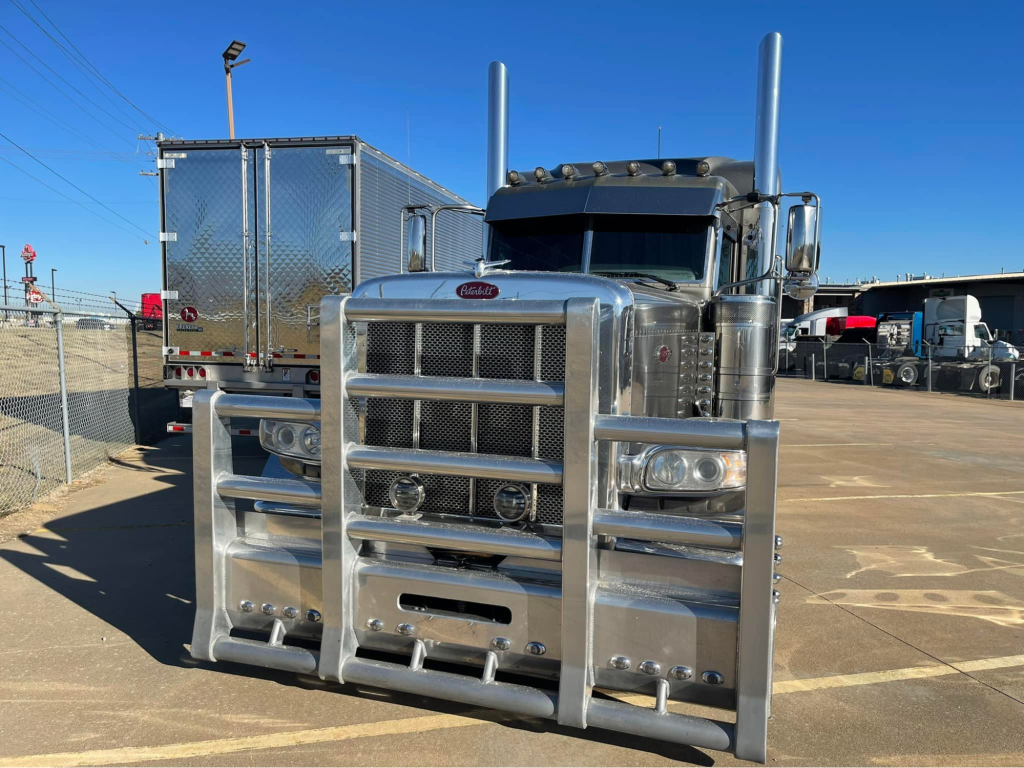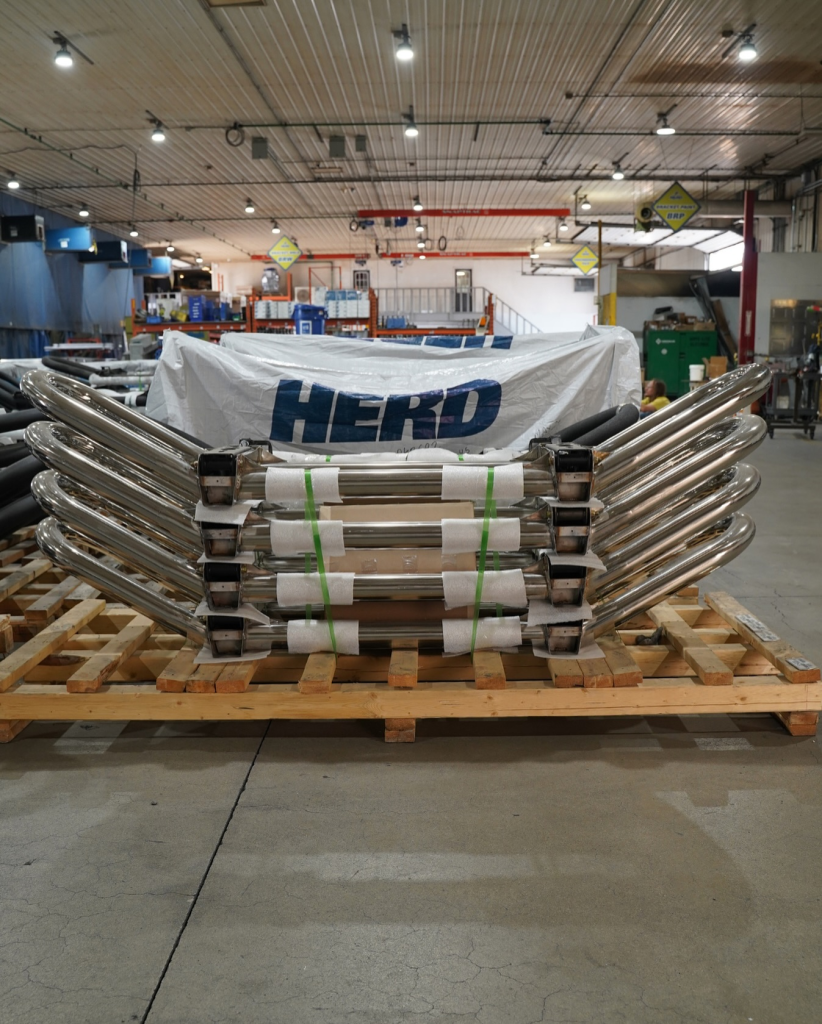Fleet managers and procurement specialists face increasing pressure to justify equipment investments while maintaining operational efficiency and cost control. Stainless steel grille guards offer significant long-term benefits for fleet decision-makers who understand the value of quality material selection.
The business case for these protection systems extends beyond initial purchase considerations to encompass total cost of ownership, maintenance reduction, and enhanced asset value retention. Fleet managers evaluate these systems as strategic investments rather than operational expenses.
This analysis examines the business advantages that drive fleet managers to consider stainless steel construction for their protection equipment needs. Understanding these benefits enables informed decision-making that supports both operational goals and financial objectives.

Material Superiority and Performance Advantages
These protection systems offer material advantages that translate into operational benefits for commercial fleet applications. The corrosion resistance in stainless steel construction reduces the maintenance cycles and replacement requirements associated with alternative materials.
Stainless steel’s strength-to-weight ratio provides effective protection while minimizing vehicle weight penalties that affect fuel efficiency and payload capacity. This characteristic becomes valuable for fleet operations where weight restrictions impact profitability and compliance requirements.
The material’s thermal stability ensures consistent performance across temperature ranges encountered in diverse operating environments. Fleet vehicles operating from northern climates to southern regions maintain protection effectiveness without material degradation or performance variation.
Key performance characteristics include:
- Corrosion resistance: Eliminates rust and oxidation concerns in harsh environments
- Impact resistance: Effective energy absorption during collision events
- Thermal stability: Consistent performance across temperature extremes
- Fatigue resistance: Extended service life under constant vibration and stress
- Chemical compatibility: Resistance to road salts, cleaning chemicals, and environmental contaminants
HERD grille guards feature quality stainless steel construction to provide these performance advantages in commercial fleet applications. The material selection supports reliable protection while minimizing long-term ownership costs.
Total Cost of Ownership Analysis
Fleet financial analysis shows stainless steel grille guards can provide a favorable total cost of ownership compared to alternative materials through reduced maintenance requirements and extended service life. Initial investment considerations are evaluated within operational periods through maintenance savings and enhanced durability.
Maintenance cost reduction represents the most significant operational advantage of stainless steel construction. The material’s corrosion resistance eliminates protective coating requirements, refinishing cycles, and premature replacement due to environmental damage.
Service life extension provides additional value through extended replacement cycles and enhanced asset utilization. Stainless steel systems often deliver extended operational periods compared to coated steel or aluminum alternatives, reducing capital equipment replacement frequency.
Asset value retention benefits fleet organizations through higher resale values and reduced depreciation rates. Vehicles equipped with stainless steel protection systems maintain enhanced market appeal and command premium prices in secondary markets.
Fleet cost analysis components include:
- Acquisition costs: Initial purchase and installation expenses
- Maintenance expenses: Cleaning, inspection, and repair requirements
- Replacement timing: Service life and replacement cycle planning
- Operational impacts: Weight effects on fuel consumption and payload
- Disposition value: Resale price premiums and asset recovery rates
Maintenance Requirements and Operational Benefits
These protection systems significantly reduce fleet maintenance requirements compared to alternative materials, enabling maintenance teams to focus resources on critical vehicle systems rather than protection equipment upkeep.
Cleaning procedures for stainless steel systems require only standard washing protocols without specialized treatments or protective coatings. The material’s natural finish maintains appearance standards through normal fleet washing cycles, eliminating additional detailing requirements.
Inspection intervals can be extended due to stainless steel’s resistance to hidden corrosion and structural degradation. Visual inspections quickly identify any impact damage or mounting issues without concern for underlying material deterioration.
Repair procedures are simplified when required, with standard welding and fabrication techniques suitable for most repair scenarios. The material’s weldability and availability enable cost-effective repairs using standard shop equipment and procedures.
Maintenance advantages include:
- Simplified cleaning: Standard wash procedures maintain appearance
- Extended intervals: Reduced inspection and maintenance frequency
- Predictable service: Consistent performance without surprise failures
- Repair accessibility: Standard techniques and material availability
- Documentation reduction: Fewer maintenance records and compliance requirements
Implementation Strategies for Fleet Organizations
Successful implementation of stainless steel protection systems requires systematic planning that addresses procurement, installation, and fleet integration considerations. Strategic implementation ensures maximum benefit realization while minimizing operational disruption.
Procurement planning should evaluate fleet replacement cycles and budget timing to optimize acquisition scheduling. Coordinating protection equipment purchases with vehicle acquisitions or major maintenance cycles provides cost efficiencies and operational advantages.
Installation coordination benefits from standardized procedures and technician training across fleet service locations. Consistent installation practices ensure optimal performance while reducing training requirements and quality variations.
Fleet standardization simplifies maintenance procedures, parts inventory, and technician training requirements. Consistent equipment across fleet vehicles reduces complexity while enabling volume purchasing advantages.
Performance monitoring enables data-driven validation of investment decisions and continuous improvement of fleet specifications. Tracking maintenance costs, incident reduction, and operational impacts provides evidence for future procurement decisions.
Strategic implementation elements include:
- Phased deployment: Gradual integration with existing fleet replacement cycles
- Training programs: Technician education on installation and maintenance procedures
- Performance metrics: Tracking systems for cost validation and improvement identification
- Vendor management: Supplier relationship development for ongoing support
- Policy development: Fleet standards and specifications for consistent procurement

Business Case Development and ROI Justification
Fleet managers require compelling business cases to justify stainless steel protection investments to executive leadership and financial decision-makers. Effective justification requires quantitative analysis supported by operational benefits documentation.
Return on investment calculations should encompass maintenance savings, extended service life, and operational benefits over the equipment’s expected service period. Comprehensive analysis provides evidence for decision-makers while establishing performance expectations.
Risk reduction benefits include decreased accident costs, reduced vehicle downtime, and enhanced safety records that may qualify for insurance premium reductions. These factors contribute to overall investment justification while supporting broader fleet safety objectives.
Competitive advantages may include enhanced professional image, reduced maintenance staff requirements, and improved vehicle availability rates that support customer service objectives and operational efficiency goals.
Executive summary components include:
- Investment overview: Equipment costs and implementation requirements
- Financial benefits: Maintenance savings and operational cost reductions
- Risk mitigation: Safety improvements and liability reduction
- Strategic alignment: Support for broader fleet objectives and organizational goals
- Implementation timeline: Deployment schedule and milestone planning
Frequently Asked Questions
What makes stainless steel grille guards beneficial for fleet applications compared to alternative materials?
Stainless steel provides inherent corrosion resistance, good strength-to-weight ratios, and extended service life compared to coated steel or aluminum alternatives. These characteristics can translate into reduced maintenance requirements and potentially lower total cost of ownership for fleet applications.
How do stainless steel protection systems impact fleet maintenance costs?
Stainless steel construction eliminates protective coating maintenance, reduces inspection frequency, and extends service intervals compared to alternative materials. Fleet organizations typically experience significant maintenance cost reductions through simplified care requirements and extended equipment life.
Are stainless steel protection systems suitable for all fleet vehicle types?
Stainless steel protection systems adapt to most commercial vehicle applications with proper engineering and installation. Vehicle compatibility depends on mounting provisions, weight capacity, and operational requirements rather than material limitations.
What implementation timeline is required for fleet-wide deployment?
Implementation timing varies based on fleet size, replacement cycles, and operational requirements. Successful deployments typically follow phased approaches aligned with vehicle replacement schedules to minimize disruption and optimize budget utilization.
How do stainless steel protection systems affect vehicle resale values?
Vehicles equipped with stainless steel protection systems typically command premium prices in secondary markets due to enhanced appearance retention and reduced maintenance history. The equipment often transfers value to subsequent owners while supporting higher resale prices.
Upgrade Your Fleet with Durable Stainless Steel Grille Guards
Stainless steel protection systems represent strategic investments for fleet organizations focused on long-term cost optimization and operational efficiency. The material’s inherent advantages translate into measurable benefits including reduced maintenance costs, extended service life, and enhanced asset values.
Forward-thinking fleet managers recognize these systems as essential components of comprehensive asset management strategies. The business case for stainless steel construction strengthens over time as maintenance savings accumulate and performance advantages compound.
Success requires systematic implementation aligned with fleet objectives and budget cycles. Organizations that commit to quality equipment specifications achieve measurable improvements in maintenance efficiency, cost control, and operational performance.
Ready to optimize your fleet protection strategy? Contact HERD for expert guidance on implementing stainless steel grille guard solutions tailored to your fleet requirements and operational objectives.
The investment in superior materials pays dividends through reduced operational complexity, enhanced vehicle protection, and improved total cost of ownership. Visit HERD to explore premium stainless steel protection systems engineered for commercial fleet applications.